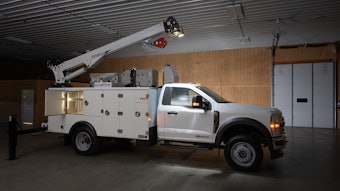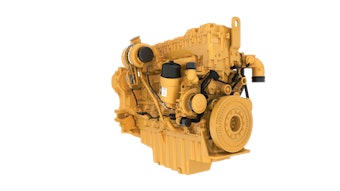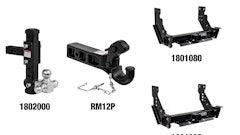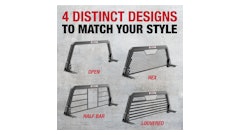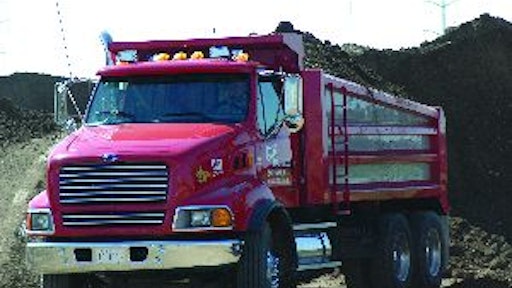
Given recent record diesel fuel prices, fuel economy has a great impact on truck transmission selection. Yet, you need to look at all performance criteria before jumping to a conclusion. ?Fuel price certainly has become a key factor, but transmission selection based on fuel economy alone may [mean] a trade-off with productivity,? cautions Brian Daniels, product manager powertrain, Daimler Trucks North America.
?The most critical component of achieving maximum fuel economy during cruising is engine RPM,? says Lou Gilbert, Allison Transmission. ?Whether a truck cruises at 10, 40 or 65 mph, having the engine operating in its recommended area is the best way to reduce fuel consumption and increase MPG. Fleet managers understand how their trucks are used and should write their specs according to the duty cycle, not truck performance at 65 mph on the highway, where it may spend a very small amount of time.?
As such, you need to think through all of the duty cycle requirements. ?Acceleration, cruise speeds, deceleration and idle time are all factors,? says Gilbert. ?The amount of time each of these duty-cycle components is used will be specific to a total duty cycle.?
Once you establish the duty cycle requirements, you can then select the appropriate axle ratio. ?Following the axle selection, available shift schedules should be used to further refine engine RPM for the primary operating parameter,? says Gilbert. He adds that Allison Transmission offers a variety of shift schedules that can be tailored to the duty cycle and overall truck specs. ?These shift schedules will help refine vehicle operation and optimize fuel consumption.?
The right ratio range
A transmission must enable the engine to work in its ?sweet spot? while traversing the jobsite and cruising down the road, plus provide startability for severe grades and ground conditions. ?The sweet spot is certainly a factor. However, it is also a function of the ability to shift (grab gears) while maintaining momentum,? says Daniels.
Jobsite conditions play a key role. Consider grades and soil conditions when looking at items such as gear selection (missing gears); torque interruption (vehicles getting stuck in poor soil); and launch behavior.
?The overall powertrain combination should be selected to drive at the desired speed without being near a gear shift point,? says Daniels. ?With automatic and automated transmissions, it is important to have the ability to lock into a specific gear (manual mode).?
Also factor in engine type (heavy duty vs. medium duty), desired maneuvering speed and desired cruising speed. ?The transmissions that offer the best combination of startability and ratio range are those that are optimized with the vehicle, engine, axle, etc.,? Daniels asserts.
In addition, consider the importance of a power take-off (PTO) in your application. ?While most transmissions offer a PTO... certain buyers will purchase transmissions based on PTO capacity (torque and power output), PTO engine speed coverage (as related to engine speed) and the ability to shift the engine while the PTO is being operated,? says Daniels.
Manuals offer multiple choices
Before you get too involved in matching transmission gear ratios to a particular application, you need to choose the type of transmission that best meets your application. There are three basic types: manual, automated mechanical and automatic.
Manual transmissions come in variations to suit virtually any application from 5 to 18 speeds. For example, a dump truck application offers dozens of available choices.
?One of the most popular is an ?LL? transmission, equipped with two deep low gears for the work site, yet very capable on the highway when hauling from the site,? says Gerard DeVito, director of engineering for heavy-duty transmissions, Eaton. ?The 8LL is still very popular because of its ruggedness, durability, simplicity of repair and outstanding performance.
?We also offer a ?C? ratio 10-speed, which is essentially an on-highway transmission, but with a good overall ratio that can manage many dump truck duty cycles,? he continues. This can be an economical choice for the application, but care must be taken not to over task the transmission.
?Our 13-speed has been used for many years on construction sites, as well as our 15-speed with five low gears and 10 road gears,? DeVito notes. Then there is the 18-speed, which is available in manual and automated versions. ?An 18-speed is preferred for heavy hauls in excess of 90,000-lb. GCW because of its ability to split gears for improved performance in the low end.?
If you haul heavy loads, you may want to consider a transmission with more speeds, because you get closer splits between each gear. ?When considering a heavier load, an 18-speed transmission would make sense,? says Daniels.
Another advantage of manual transmissions is the initial purchase cost. Because of their simple design, they tend to cost the least. However, they have disadvantages when it comes to vehicle launch, torque interruption, driver pool and driver fatigue.
?Driver pool experience has been shown to limit the ability of a fleet to operate manual transmissions,? Daniels notes. ?Inexperienced drivers may not be operating the vehicle at its optimal performance and efficiency, therefore reducing fuel economy, clutch life, etc.?
AMTs add ease of operation
This is where an automated mechanical transmission (AMT) can be a plus. An AMT is based on a mechanical transmission, but the necessary electrical components have been added to take operator experience out of the equation. ?This concept takes a base manual transmission and adds an automated clutch, shift controls and computer logic to its operation,? says DeVito.
AMTs come in both two- and three-pedal designs. The three-pedal design incorporates a clutch pedal for launching the vehicle. The two-pedal system launches the vehicle automatically without a clutch pedal.
Once in motion, an AMT operates like an automatic transmission, yet promises the efficiency of a manual transmission. It uses information from the engine to efficiently perform shifts.
?Fuel economy is more important than ever before and all of the fleets are looking for an edge,? says DeVito. ?With the advent of AMTs, the fleet can now spec the convenience of an automated transmission that features the fuel economy of a perfectly shifted, multi-speed transmission.
?Fleets currently using AMTs report a reduction in training time and greater operator satisfaction and productivity,? he adds. ?Also, taking the manual transmission out of the truck will often provide you with a broader pool of prospective operators, including those that may have a difficult time learning to shift a manual transmission with 10, 13, 15 or even 18 speeds.?
There are also benefits even with experienced drivers. ?Though seasoned drivers may state that they want to control all their shifts, this can result in poorer performance and efficiency,? says DeVito. ?When a fleet equips their trucks with AMTs, all the operators shift as efficiently as their best driver.?
In addition, DeVito claims the AMTs increase fuel efficiency vs. an automatic. ?The torque converter in an automatic takes some time to ?lock up,? or establish a direct connection with the rest of the drivetrain. The result of that action is wasted power and fuel, at least until lock-up occurs,? he states.
The other difference is the number of speeds available. ?In a heavy-duty dump truck with an automatic transmission, the operator has only five or six speeds. In an AMT, the operator may have 10, 13, 15 or 18 speeds that the transmission computer selects as the ideal ratio for that moment,? Daniels points out. ?When gear ratios are more closely controlled across a wider variety of choices, the result is improved performance and fuel efficiency.?
Until recently, the selection of AMTs for on/off-road use was limited. ?Today?s automated products can be limited by clutch availability at these high weights,? says Daniels. ?Continued improvements in clutch technology are under development and will benefit the penetration of AMTs in off-road applications.?
DeVito agrees, noting, ?In 2009, a new family of [Eaton] AMTs will be introduced in limited quantities, with LL 13- and 18-speed configurations tailored specifically for construction, mixers, severe service and other demanding on/off-road applications.? The transmissions will offer increased controllability under all operating conditions to enhance driver and work site safety, a ?hill start aid? and improved low-speed maneuverability and control in both forward and reverse.
Automatics deliver greater efficiency
When you use the term automatic transmission, the first thing that usually comes to mind is a planetary automatic with torque converter.
?A fully automatic transmission has a torque converter, which multiplies engine torque in first and second gear,? says Gilbert. ?With that multiplication, the torque converter allows all internal ranges in a fully automatic transmission to be higher (lower numerically) than a comparable manual or AMT, which results in lower engine RPM at lower cruise speed and reduces fuel consumption. At higher cruise speeds, the transmission?s overdrive ratios keep the RPM in the optimum range, producing optimum fuel economy.?
The torque converter also has advantages when running off road. ?The torque converter will reduce driveline shock, reduce driveline and axle damage, improve driver skills and provide superior maneuverability,? asserts Gilbert.
In the past, the efficiency of a torque converter vs. the direct hookup of a manual transmission had been questioned. But newer automatic transmissions spend most of the time in lock-up rather than on the converter. In addition, many automatics feature overdrive, which further enhances fuel economy.
Automatic transmissions allow full power upshifts, producing small changes in engine speed with each shift. ?This attribute alone can improve the productivity of a truck, creating higher average speeds during acceleration, achieving more loads and thus more profits,? says Gilbert. ?Higher average speeds over a day mean more work is accomplished with proportionately less fuel.?
Large changes in engine RPM during shifting can cause inefficient operation. ?Manual and automated transmissions completely cut engine power/RPM every time a shift is made,? says Gilbert. ?These power interrupts result in wasted time, reduced productivity, increased engine emission production and wasted fuel. Also, the increased rolling resistance when operating in mud or sandy soil makes it very difficult to maintain vehicle speed due to these power interrupts.?
In soft soils where the truck may become stuck, automatic transmissions may also protect the driveline. Inexperienced operators using manual transmissions can fry clutches or throw out the rear end.
Automatic transmissions may also have an advantage when trying to get heavy loads in excess of 90,000 lbs. moving. ?Automatics provide an improvement in vehicle launch, which becomes more pronounced at these high weights,? says Daniels.
As with manual and automated transmissions, there are several automatic transmission models available to accommodate tougher operating conditions.
?For trucks used on and off highway, in sandy soil and on rugged grades, the Rugged Duty Series (RDS) is the proper transmission,? says Gilbert. The Allison 3500 RDS and 4500 RDS provide maximum ratio coverage. ?Along with torque multiplication provided by the torque converter, the wide ratio gearing provides excellent startability for off-highway applications and offers an overdrive ratio of .65:1. This allows the engine to operate at its optimum RPM during highway operation.?
For heavy transport tractors, there are the 4000 RDS and 4500 RDS close- and wide-ratio models. In addition to torque multiplication provided by the torque converter, the optimum ratio coverage enables greater startability for heavily loaded applications, and offers an overdrive ratio of .65:1, says Gilbert.
Admittedly, such performance comes at a price. ?The disadvantages [of automatic transmissions] traditionally include a higher initial cost,? says Daniels, ?although this can be offset over time by lower overall operating costs.?

